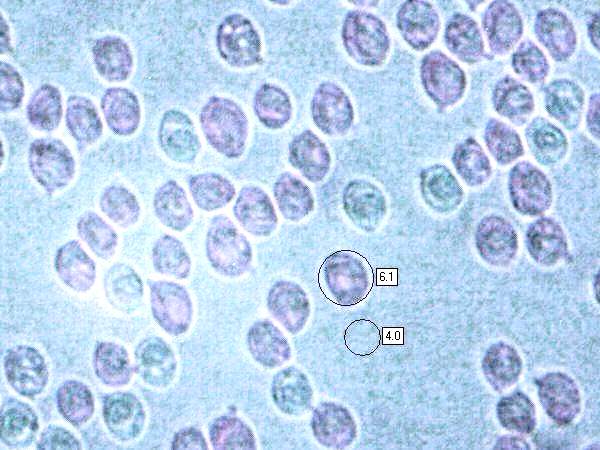Lyophyllum connatum (Schumach.) Singer - White Domecap
Phylum: Basidiomycota - Class: Agaricomycetes - Order: Agaricales - Family: Lyophyllaceae
Distribution - Taxonomic History - Etymology - Identification - Culinary Notes - Reference Sources
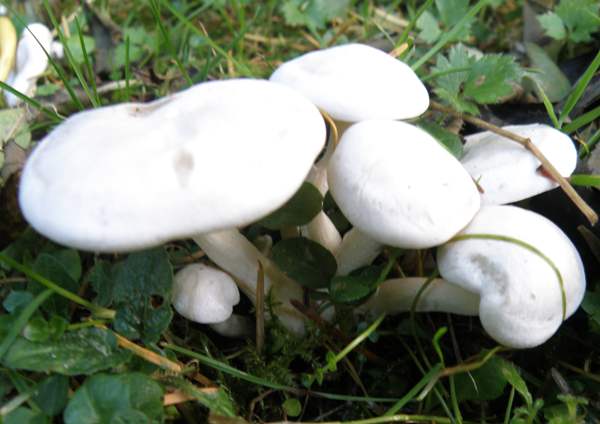
A common sight in the disturbed soil beside woodland footpaths, the White Domecap fruits either singly or in small clusters. Often the fruitbodies of fungi in this genus form compact clusters with their stem bases fused together, and so the stems are usually bent rather than straight.
In larger clusters those caps towards the centre of the group frequently have distorted rims, sometimes creating the illusion of square-capped mushrooms.
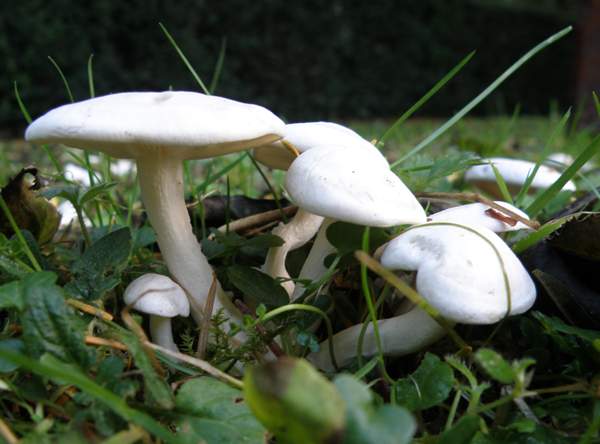
Distinguishing the White Domecap from some of the white Tricholoma species (the 'knights', as they are commonly called) is far from easy. Unlike Tricholoma fungi, Lyophyllum mushrooms are not obligately mycorrhizal and so they can grow well away from trees.
White Domecaps generally grow in tufts, while the White Knight Tricholoma album and a number of other pale knights appear singly either or in untufted trooping groups; however, to be absolutely certain it is advisable to consider not only the growth habit but also to look at the microscopic characters.
Distribution
A widespread and fairly common find in Britain and Ireland, the White Domehead occurs also throughout most of mainland Europe from northern Scandinavia down to the Mediterranean region.
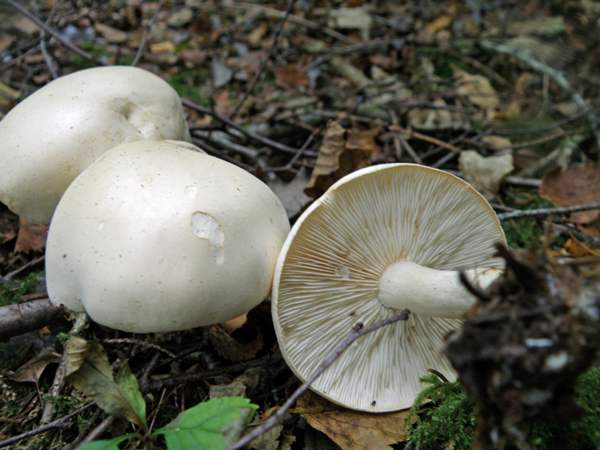
Taxonomic history
This forest fungus was first described in scientific literature in 1801 by the Danish mycologist Heinrich Christian Friedrich Schumacher (1757 - 1830), who gave it the binomial name Agaricus connatus. (Most gilled fungi were placed in the Agaricus genus in the early days of fungal taxonomy, but the majority have since been relocated to new genera.) In 1939, German-born mycologist Rolf Singer transferred this species to the genus Lyophyllum, thus establishing its currently-accepted scientific name as Lyophyllum connatum.
Synonyms of Lyophyllum connatum include Agaricus connatus Schumach., Clitocybe connata (Schumach.) Gillet, and Tricholoma connatum (Schumach.) Ricken.
Etymology
The specific epithet connatum comes from Latin and means 'born together', in other words fruiting in tufted groups rather than singly.
Identification guide
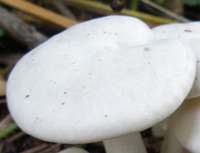 |
Cap3 to 8cm across; convex, expanding but not flattening completely; often developing a wavy margin; white; smooth and dry. |
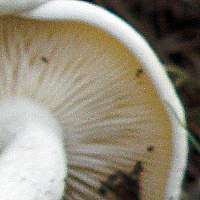 |
GillsAdnate or slightly decurrent; crowded; white. Stem3 to 6cm long and 0.8 to 1.5cm dia.; usually slightly swollen at base; white; no ring. |
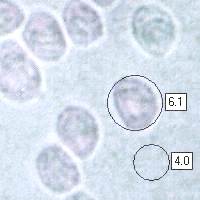 |
SporesEllipsoidal, smooth, 5.5-7 x 3.2-4.2µm, with oil drops. Spore printWhite. |
Odour/taste |
Not significant. |
Habitat & Ecological role |
Saprobic, on disturbed soil rich in leaf litter. |
Season |
July to November in Britain and Ireland. |
Similar species |
The White Domecap could be confused with the deadly poisonous Destroying Angel, Amanita virosa, but in common with other Amanita fungi the Destroying Angel has a volva at the base of its stem. |
Culinary notes
Although for many years the White Domecap was considered to be a good edible mushroom, doubts have been cast recently as one research source reported finding toxins in these fungi capable of causing DNA mutations. Those findings have been challenged by other researchers, but in view of the uncertainty we advise against gathering Lyophyllum connatum for human consumption. In any case, this is one of the white-gilled mushrooms that an inexperienced forager could confuse with Amanita virosa the Destroying Angel or with one of several other toxic Amanita species with disastrous consequences.
Reference Sources
Fascinated by Fungi, 2nd Edition, Pat O'Reilly 2016, reprinted by Coch-y-bonddu Books in 2022.
British Mycological Society, English Names for Fungi
Dictionary of the Fungi; Paul M. Kirk, Paul F. Cannon, David W. Minter and J. A. Stalpers; CABI, 2008
Taxonomic history and synonym information on these pages is drawn from many sources but in particular from the British Mycological Society's GB Checklist of Fungi.
Fascinated by Fungi. Back by popular demand, Pat O'Reilly's best-selling 450-page hardback book is available now. The latest second edition was republished with a sparkling new cover design in September 2022 by Coch-y-Bonddu Books. Full details and copies are available from the publisher's online bookshop...
